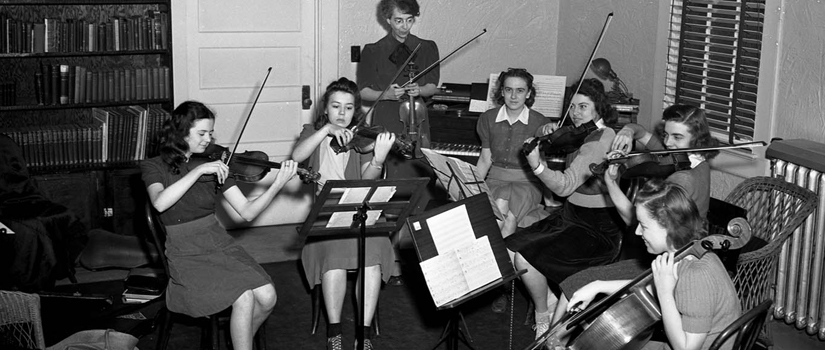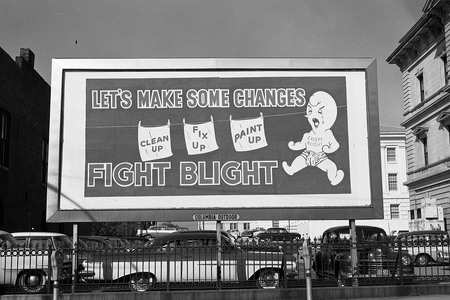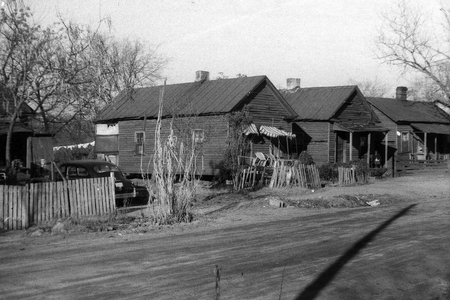It was commonplace at many American colleges and universities during the early 1900s
for music to be a student activity with no official sponsorship. Fortunately for the
University of South Carolina, its talented Glee Club members were also instrumental
musicians dedicated to sharing their passion for music with the burgeoning campus
community.
Recognizing the musical interest and talent on campus, incoming president William
Currell provided the first direct university support for music in 1914. By the 1921–22
academic year, Maurice Matteson was serving as music instructor and J.C. Lanham as
the first band director. Music was alive at the university and destined to play an
increasingly important role.
When Flinn Hall became the home of the new music department in 1924, musical interest had risen substantially on campus. Music education classes were added that summer and by the following year, enrollment in music studies had reached 147.
Already offering a Glee Club, the co-ed Follies, the University Band (predecessor of the marching band), the “Gamecock Orchestra” was formed in 1925. With the rising popularity of dance and jazz music, the ensemble featured 3 saxophones, 3 brass, and a full rhythm section, and worked abroad during summers when classes were not in session, including extended engagements at resorts and casinos in Rotterdam, France, and Germany.
-
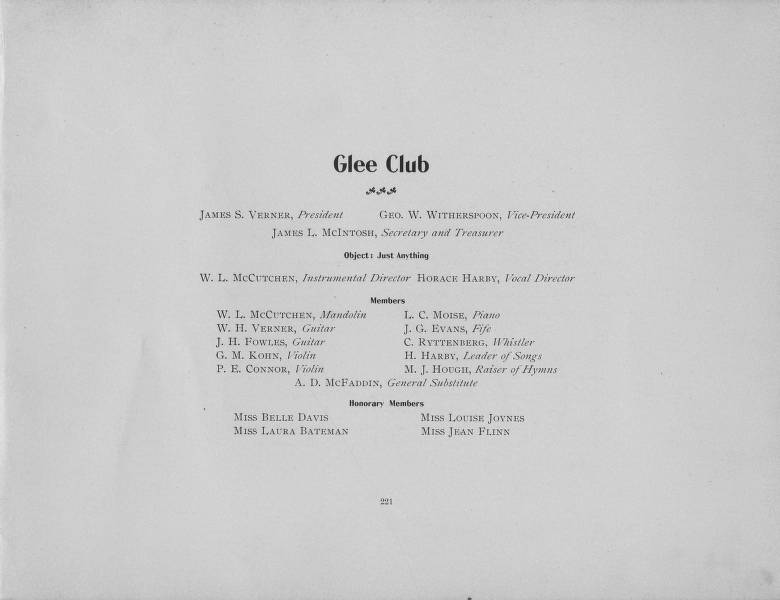
Glee Club 1899
from Garnet and Black, 1899, page 221, South Caroliniana Library
-
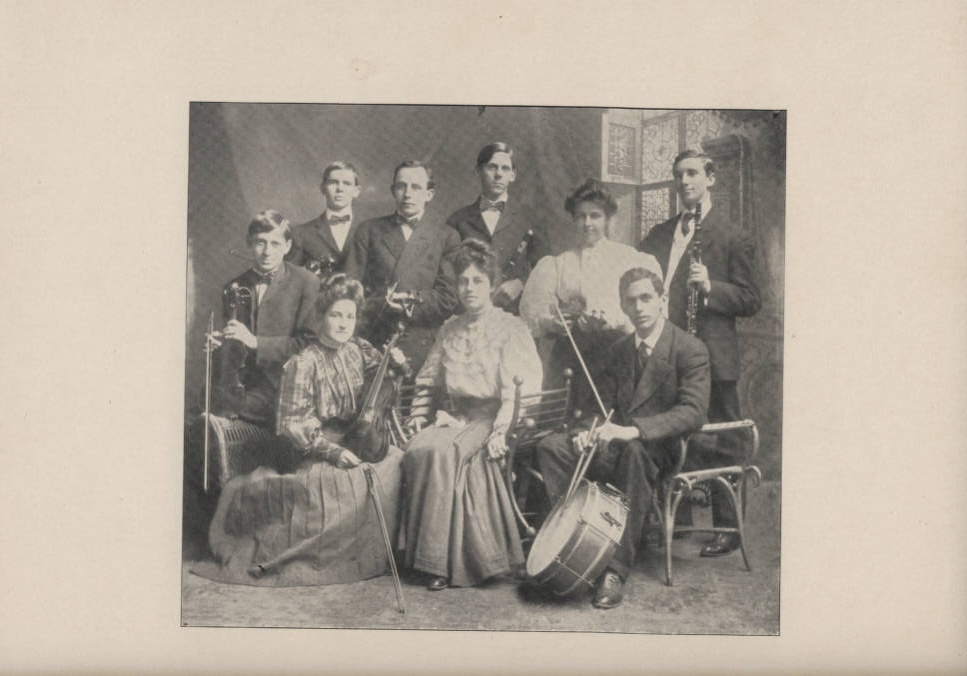
-
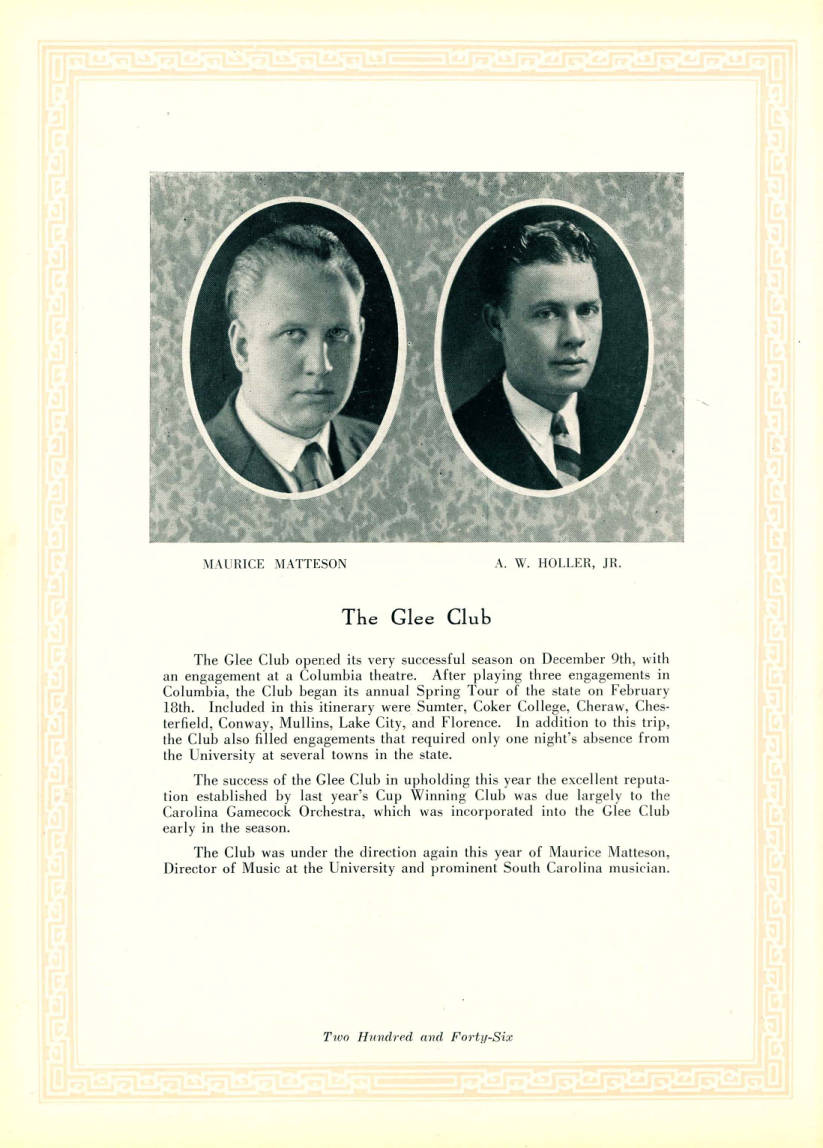
Glee Club
Maurice Matteson, 1925
-
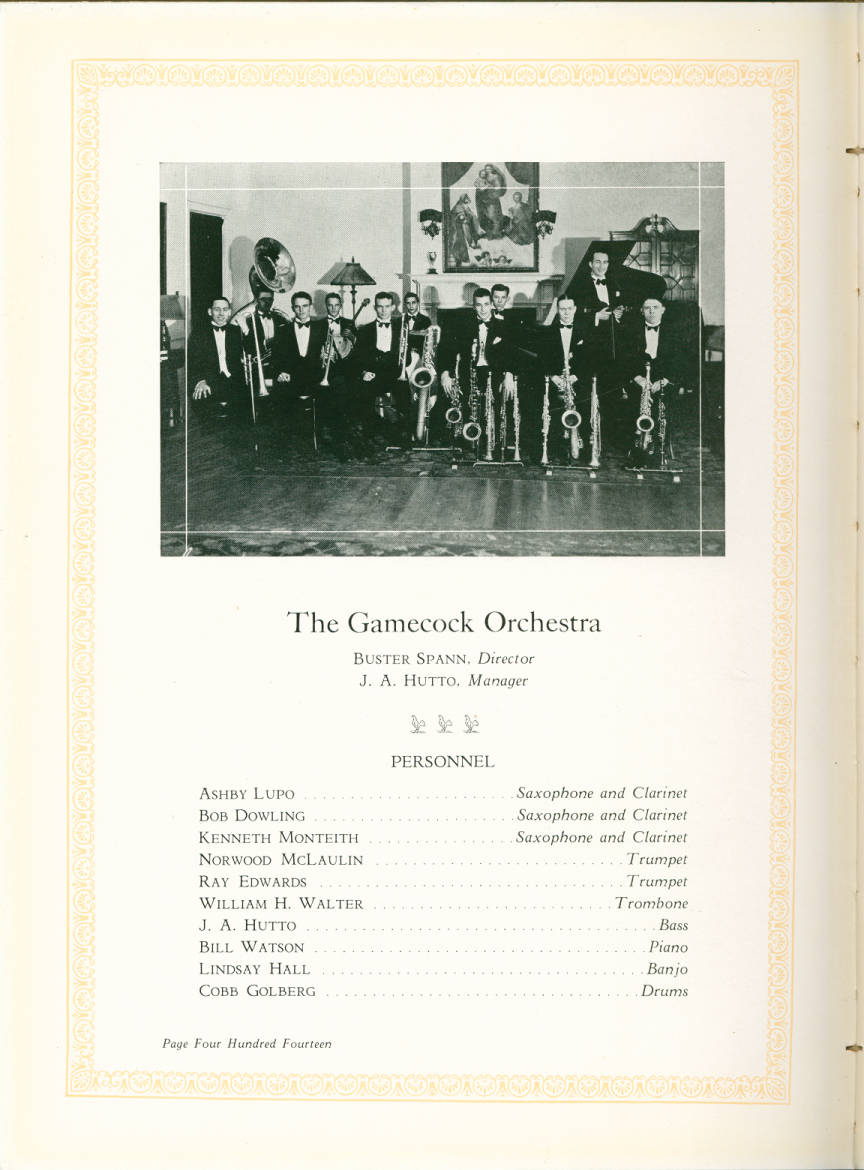
Gamecock Orchestra
Buster Spann, 1929
Academic year 1926–27 saw the initiation of credit for applied studies in piano, voice and violin; organ study was added the next year; and cello study, the year after. Under the direction of Matteson, the Glee Club blossomed, performing in the District of Columbia, Philadelphia, New York City, Chicago and Miami.
Significant changes occurred in 1929 with the hiring of Felice de Horvath, who had been teaching violin at Columbia College. Madame de Horvath introduced an extensive course of violin study, including the first on-campus teacher’s raining course made up of both classroom instruction and student teaching opportunities.
In 1929, Madame de Horvath also established the University Symphony Orchestra, which included USC students and members of her existing city orchestra. During its first four years, the orchestra held annual concerts in Rutledge Chapel on the Horseshoe. In 1933, the group moved its concerts to the university’s new and larger auditorium at Drayton Hall.
The Great Depression put a damper on the music department’s developing efforts. With university funding in shambles, faculty salaries were cut 60 percent in three years and the bulk of faculty incomes came from student lesson fees. In the midst of these troubled times, Matteson resigned just before the beginning of the 1936–37 academic year.
In 1936, J. Rion McKissick was elected 19th president of the university and, as one of the university’s most progressive thinkers, he began to examine ways to improve the music department’s facilities, including plans for the construction of a new fine arts building. It was 60 years later, however, before McKissick’s vision for new music facilities was fulfilled.
Determined to reorganize and recover from the financial devastation of the Depression, the three remaining music faculty members, newly appointed music director Hugh Williamson, his wife, Evelyn Potter Williamson, and Madame de Horvath, moved into the Rutledge College building and began to rebuild the department’s course offerings. Requirements for a bachelor of arts degree in music were established. The donation of an organ by an alumnus led to the addition of organ studies in 1941. The piano pedagogy program began in 1945. That same year, the music department started an outreach program for nonmusic majors, and music appreciation became a required subject for all School of Education students. The bachelor of arts in education with a major in music soon followed.
As the department grew, the lack of practice space became a serious obstacle to student achievement. The school moved to Rowe House, now Lieber College, on the Horseshoe. Music director Williamson described the new facility as "quite spacious and charming. Of course, it is not suitable for music, but it gives us five additional studios and seven practice rooms."
-
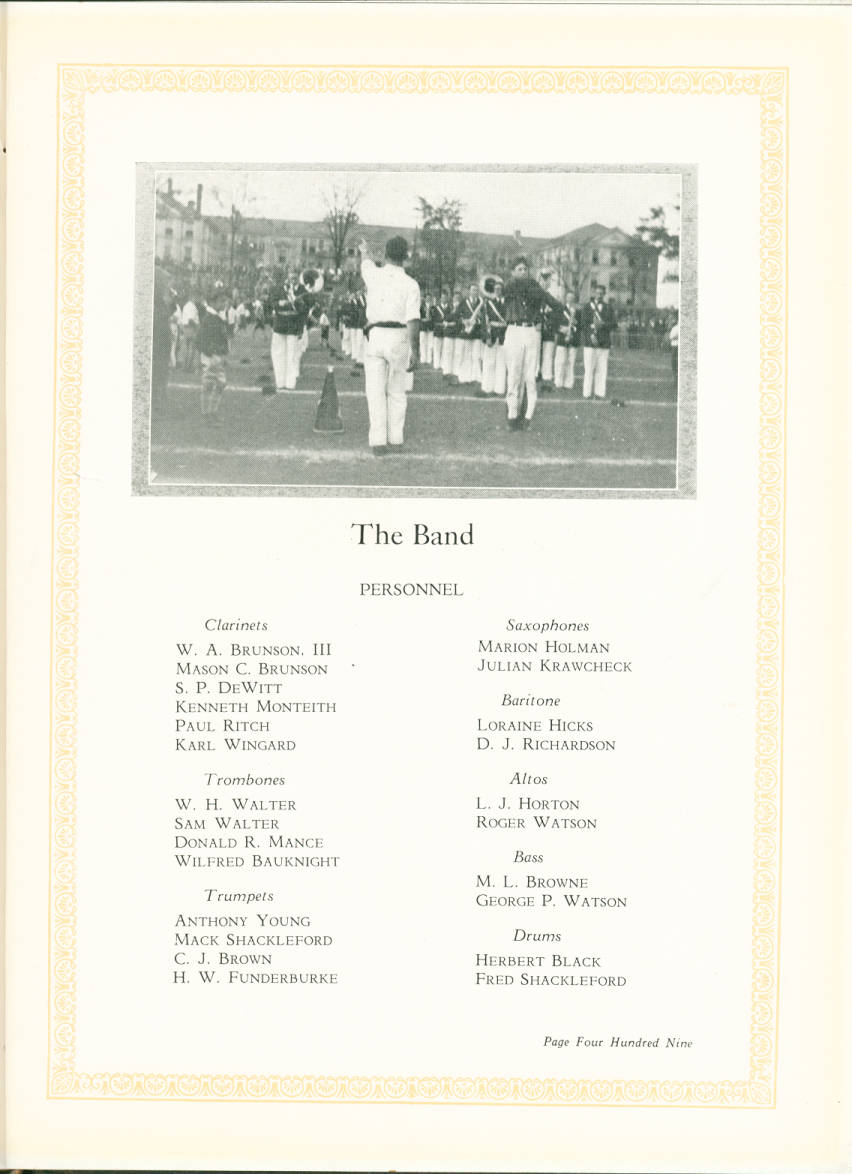
The Band
from Garnet and Black, 1929, page 409
-
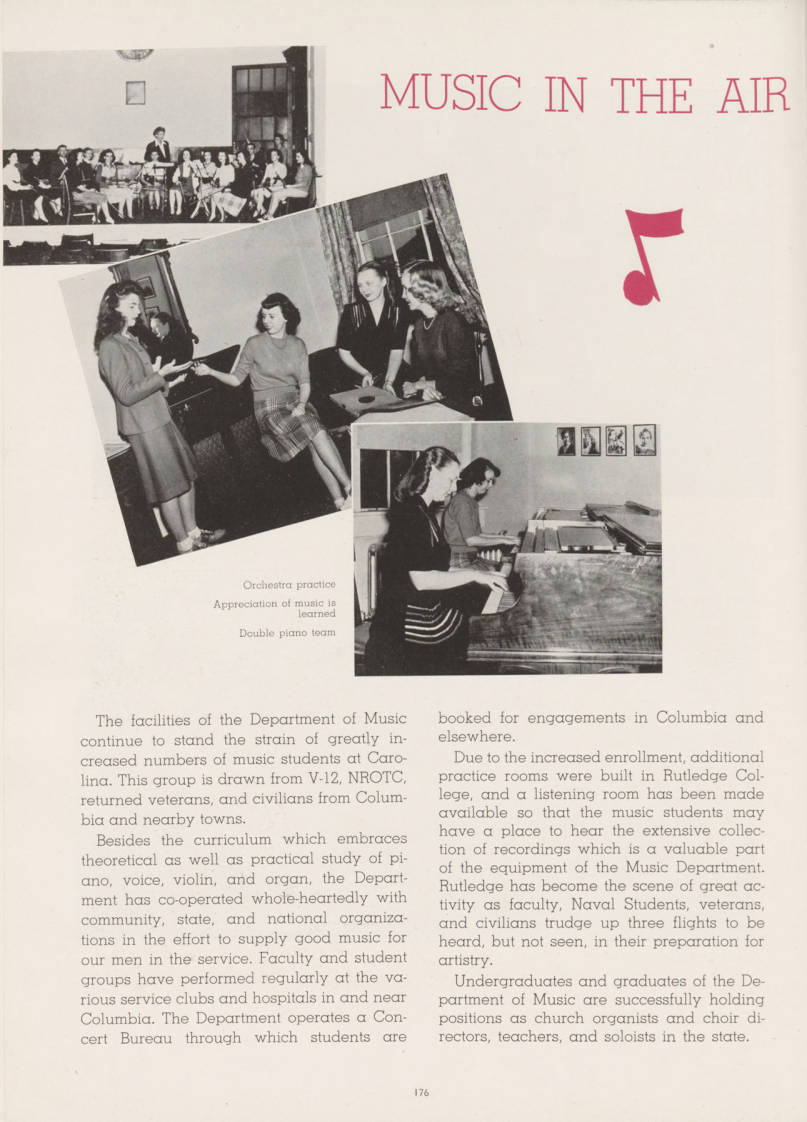
Muic in the Air
from Garnet and Black, 1945, page 176
-

Symphony Orchestra
from Garnet and Black, 1929, page 244
-
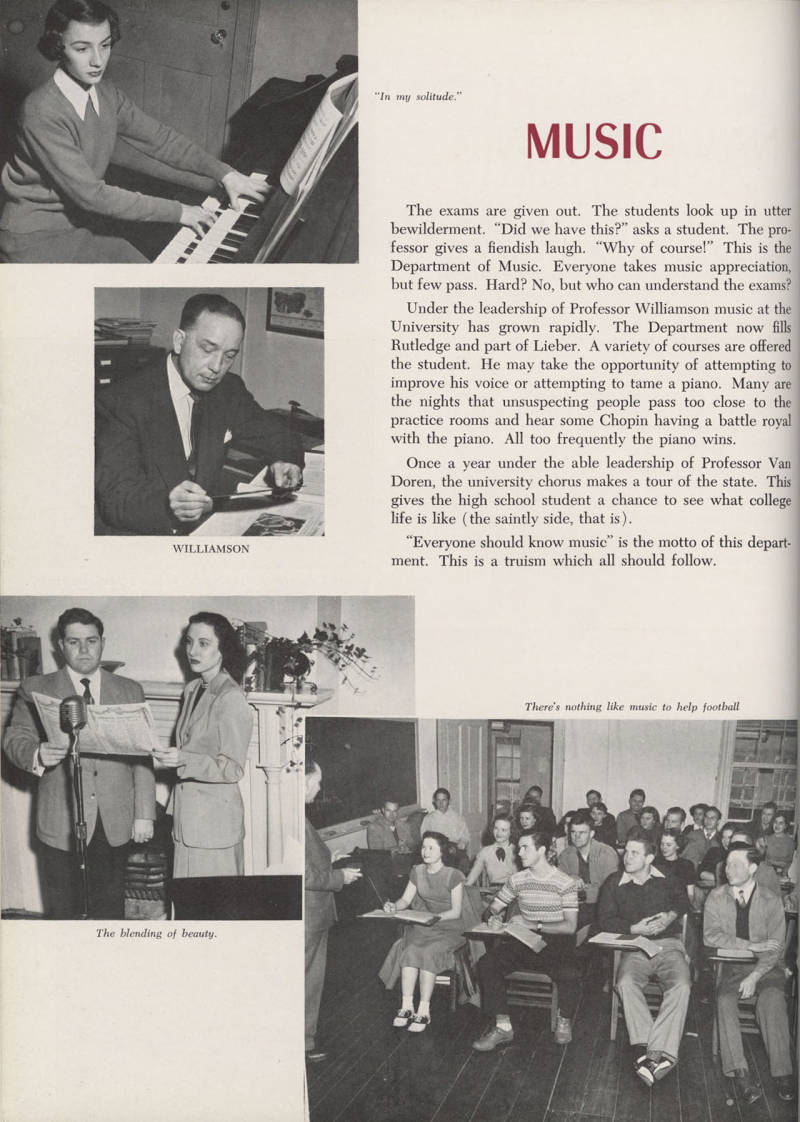
Everyone should know music
from Garnet and Black, 1951, page 34
The expansion of the University of South Carolina impacted and displaced many families in Columbia. The School of Music and the Koger Center currently sit on an area formerly known as Ward One, a working class, predominantly African American community that was cleared and demolished through a long campaign of “urban renewal” starting in the 1950’s. During this time, over 900,000 homes were demolished.
Using various practices that are now illegal, this area was deemed a credit risk by banks and lenders which made home loans and infrastructure investment impossible for its residents. A public campaign referring to the area as a “slum” with advertisements to “fight the blight” further eroded the community and potential support.
Most residents were renters, so when the city of Columbia and the University implemented tools in the federal urban renewal plan to purchase homes and redevelop the area, most families were displaced without compensation.
In 1960, the university purchased McMaster Elementary School, built in 1911, to be used as a fine arts facility, and that fall it became home to both the music and art departments. The spacious building provided band and practice rooms, studios, classrooms and a concert hall. Williamson, having seen the department move from near extinction to nine full-time faculty, retired from administrative work three years later, paving the way for the appointment of Arthur Fraser as director. During Fraser’s tenure (1963–1972), music major enrollment soared dramatically to 258 and the faculty grew in numbers and professionalism. The department initiated the USC Chamber Music Series – still in existence today as the Cornelia Freeman Concert Series and among the most popular music events of the school year.
By 1965, continued growth once again resulted in a shortage of practice rooms and rehearsal space for large ensembles. The space limitation was so serious that the band had to be capped to 112 members. To help alleviate this problem, a new rehearsal-performance hall was built in 1970 to accommodate the Marching Band, Symphonic Band, University and Civic Orchestras and various music festivals. It was named for Arthur Fraser in recognition of his dynamic leadership.
The first graduate degree, the Master of Music Education was offered in 1966; the Master of Music degree was added in 1971 and degrees in composition, music theory and piano pedagogy were added in 1972; doctoral degrees were added in 1982. In addition, scholarships were given a high priority, enabling the university to recruit first-rate music students from throughout the South. Upon Fraser’s death in 1972, longtime faculty member Robert L. Van Doren was named acting head of the music department.
-
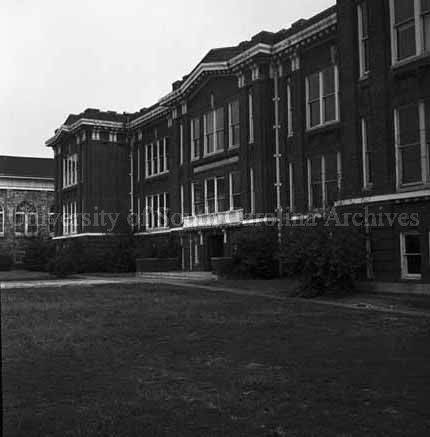
McMaster Building, March 1960
Reproduction of 4x5 negative, s0020088, University Archives Photograph Collection, South Caroliniana Library,
-
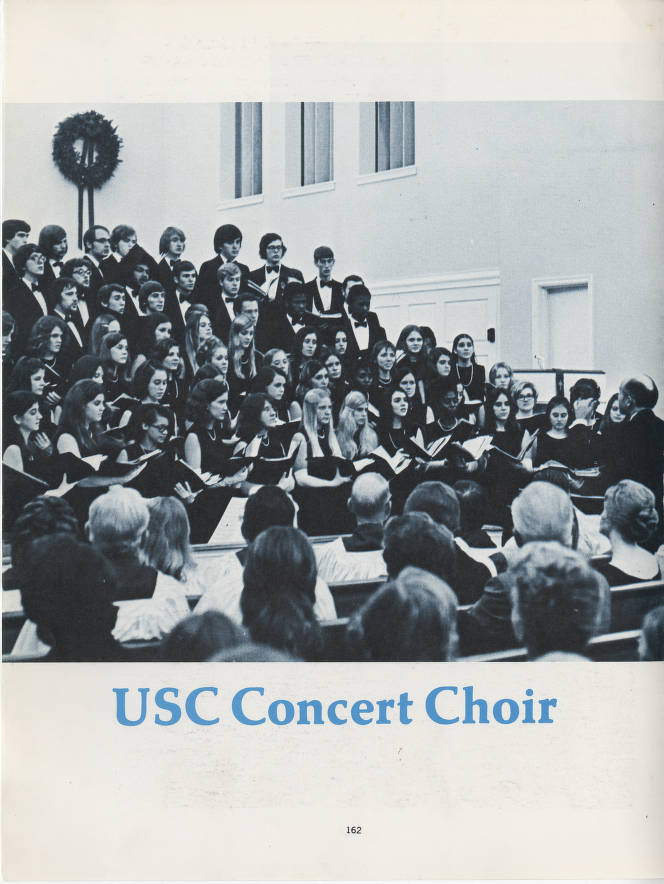
Concert Choir
from Garnet and Black, 1972, page 162
-
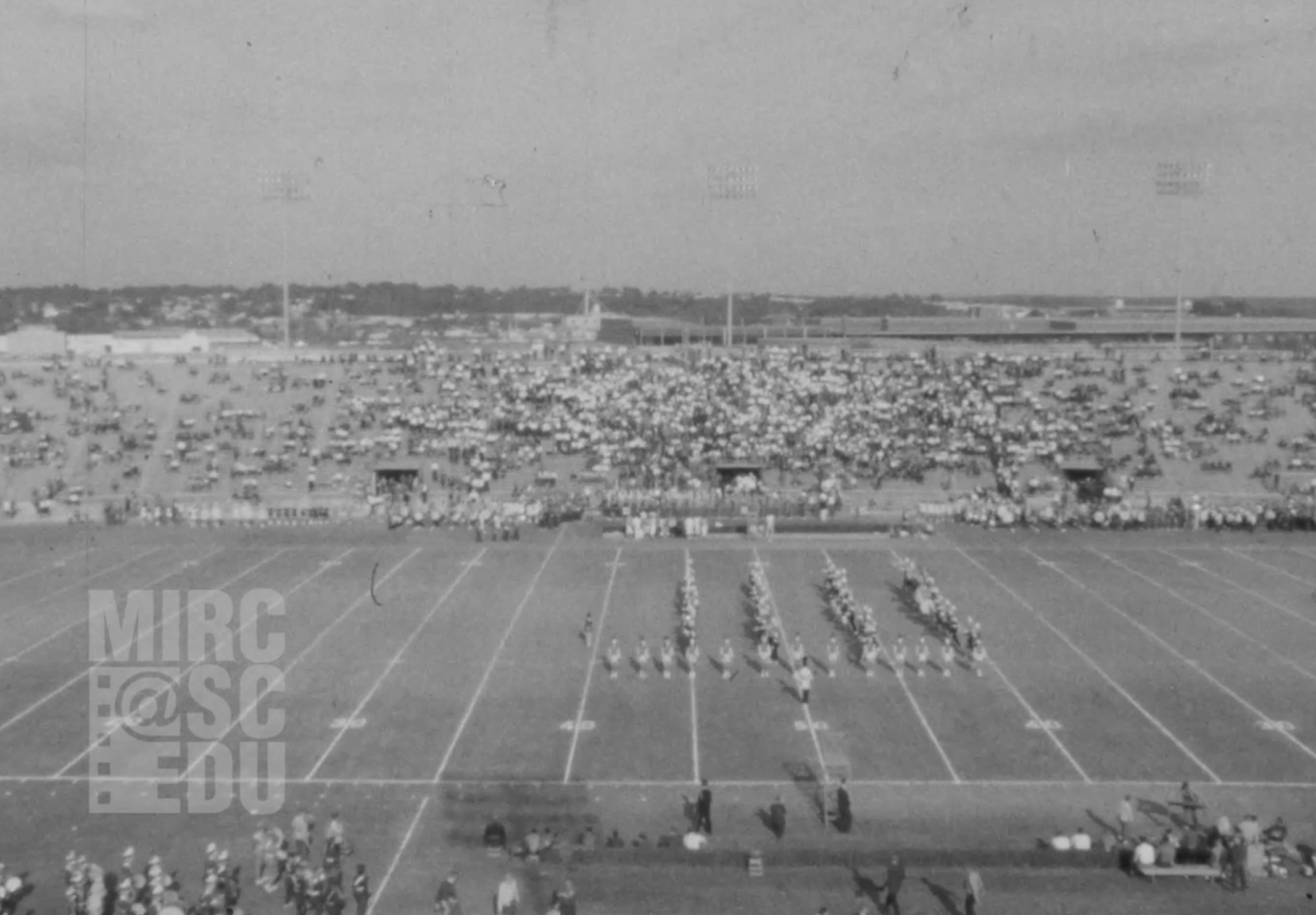
Marching Band Highlights 1961
SC Moving Image Research Collection
After a national search, William J. Moody became head of the USC Department of Music in 1973. The following year Moody proposed that the department be elevated to the status of School of Music and that the Doctor of Musical Arts degree be instituted. This change took place in 1983, and one year later, the first doctoral students were accepted into the program. During Moody’s tenure (1973–1988), music-major enrollment rose to more than 400, the number of full-time music faculty nearly doubled to 39, including nationally-known individuals in every musical sub-discipline the school; became a major center for music study in the Southeast; and was established as a destination for advanced music research for students pursuing a vast array of degree interests in music.
Dr. Moody was a seminal executive at the School of Music, leading not only unprecedented growth in programs, faculty, reach, and prestige for the unit, but also working hard with USC central administration to make enduring commitments to the presence of music and music study at the institution. Bill Moody’s leadership during these years resulted in the School’s ability to provide a substantial increase in financial aid to graduate and undergraduate students. This included a new commitment of actual tuition dollars collected from SC resident undergraduates of every major to support augmented scholarships for SC resident music majors, as well as a program that would result in profound reductions in the cost of non-resident tuition for non-SC music students at all levels.
Two other vital achievements championed by Dr. Moody but not realized until after his retirement as Director of the School were: 1. The identification of the School a stand-alone administrative unit on the campus with its own Dean, and 2. the necessity of not only the planned Koger Center for the Arts, but also a companion new music building conceived on sites next to each to each other on Assembly Street.
Growth over the years had caused the music department to become scattered across campus – McMaster College, Fraser Hall, Dorn East and Dorn West (converted apartment buildings), the basement of the ROTC building, warehouses and other locations were used to accommodate the increasing needs of music students. A centralized facility to unify the school was desperately needed. In 1979, the South Carolina Legislature’s approval of funds for planning a new fine arts complex came with the promise of a concert hall and a facility to house the entire music program. Ten years later, the Koger Center for the Arts was completed, providing first-rate performance facilities with a 2,200-seat auditorium and two large ensemble rehearsal rooms.
With the completion of the Koger Center, the school’s facilities committee shifted into high gear to campaign for a new home. Earmarked as one of the top three university projects, a new music building was recommended for state funding in 1990. Kicking off the building campaign, newly appointed director Manuel Alvarez (1988-1993) invited legislators to tour existing music facilities to see the needs firsthand. Alvarez gained their support by emphasizing how a new music building would serve not only 400-plus music majors and hundreds of nonmajors but also thousands of state residents through provision of a place for statewide music events, recitals and conferences. The Friends of Music, a newly established support group dedicated to the ongoing needs of the School of Music, made presentations to political and community leaders. Now called Friends of the University of South Carolina School of Music, the group is still active and raises scholarship funds for worthy students.
-
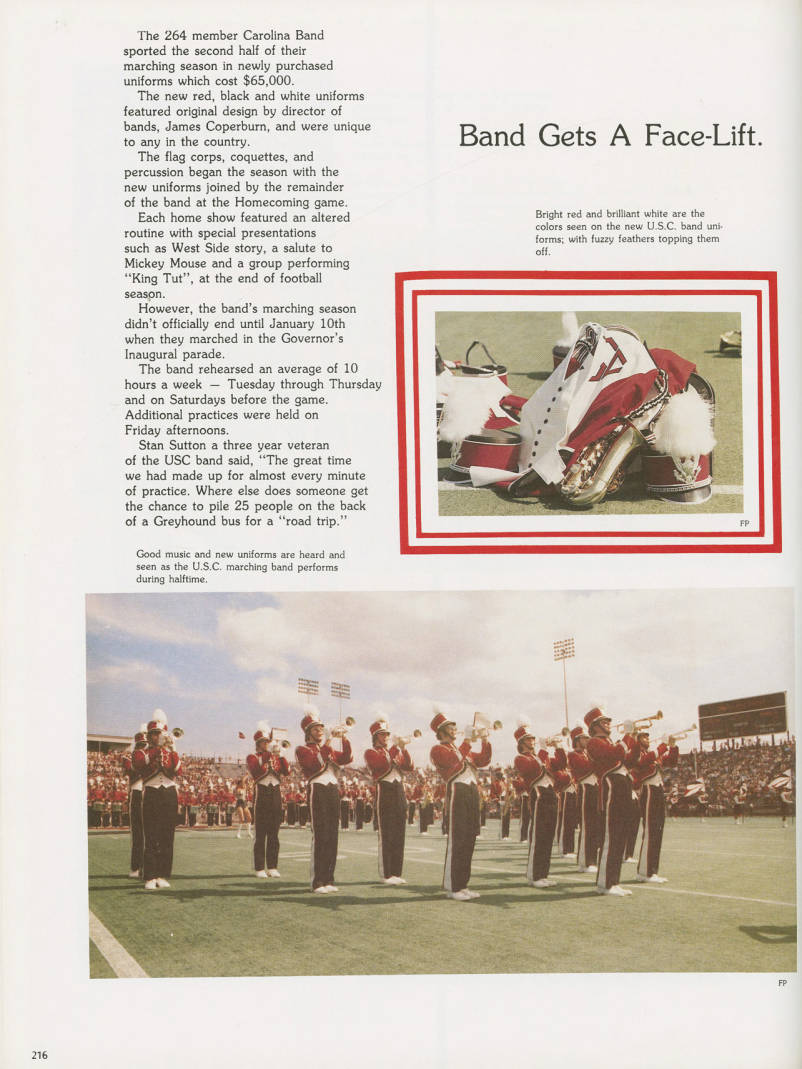
Band Gets A Face-Lift
from Garnet and Black, 1979 page 216
-
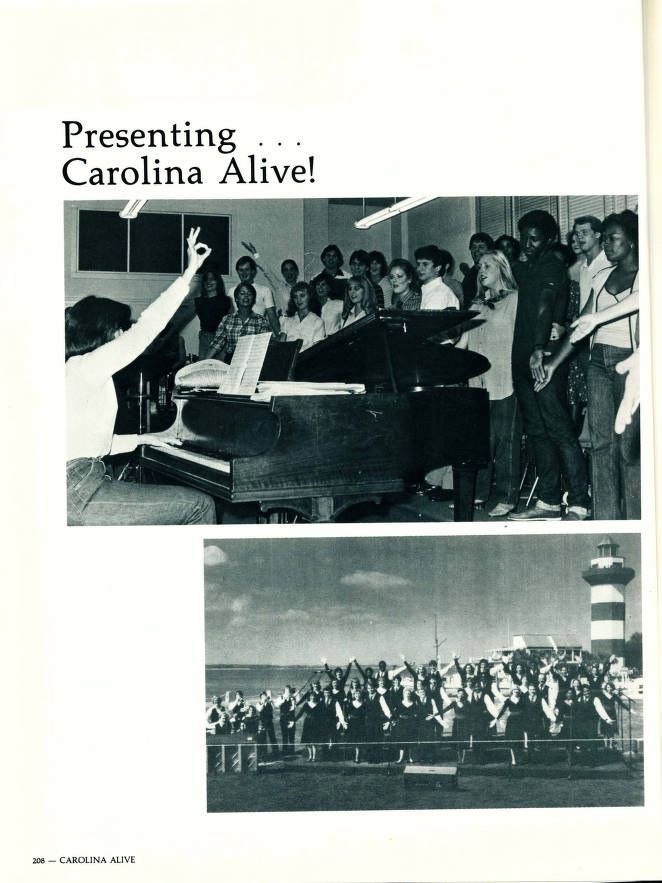
Carolina Alive
from Garnet and Black, 1982, page 208
-
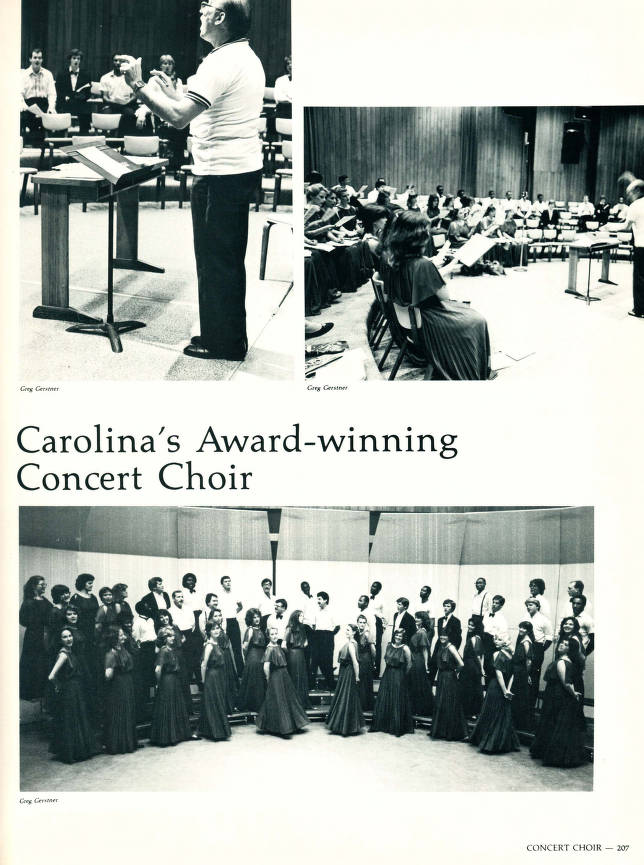
Concert Choir
from Garnet and Black, 1982, page 207
-
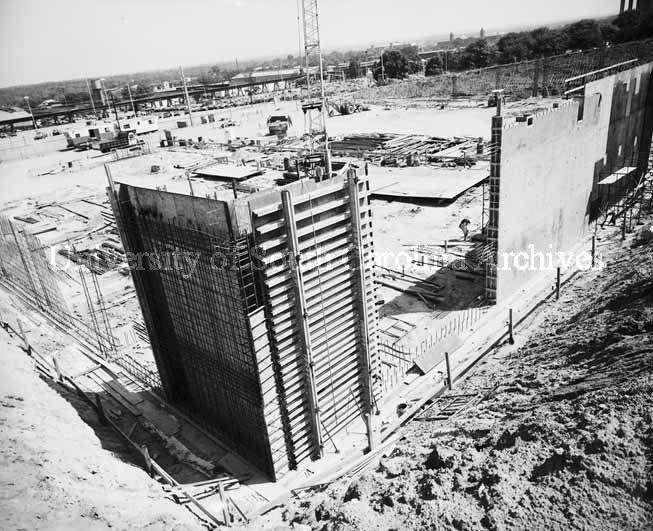
Koger Center Construction
April 30, 1987, reproduction of 4x5 negative, s0020331, University Archives Photograph Collection, South Caroliniana Library
In 1991, the Legislature approved a bond bill that included funds for a new music building, and construction began with a groundbreaking ceremony at the Koger Center on Feb. 16, 1993. In conjunction with the approaching completion of the new music building, the School of Music became an independent academic unit within the university in 1994, and Dorothy K. Payne was named its first dean. The extraordinary commitment to quality music instruction evidenced by Hugh Williamson, Arthur Fraser, William Moody and Manny Alvarez continued unabated. In 2000, following the two-year interim deanship of Alvarez, Jamal J. Rossi was named dean.
Tayloe Harding became dean in 2005 and today, the School of Music is housed in a state-of-the-art music complex that provides facilities far beyond what could have been foreseen by President McKissick. Nearly 500 music majors (340 undergraduate and 140 graduate students) and 1,600 nonmusic majors are provided an exceptional education by more than 50 faculty members. The quality of the USC School of Music is the direct result of 100 years of dedicated effort by faculty, students, alumni, staff and supporters. With a rich history and tradition, the School of Music has entered the 21st century with a national reputation for artistic and scholarly excellence.
The great promise of music is realized daily here at the University of South Carolina by the music faculty, supporters and students who devotedly create, study, perform, teach and advocate for our art.
-
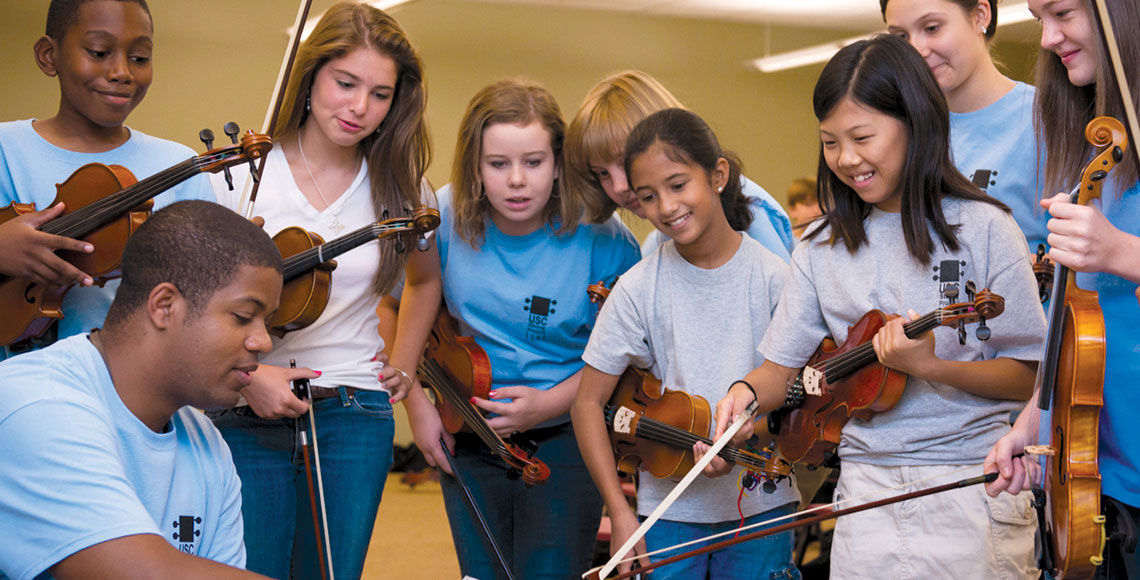
String Project
-
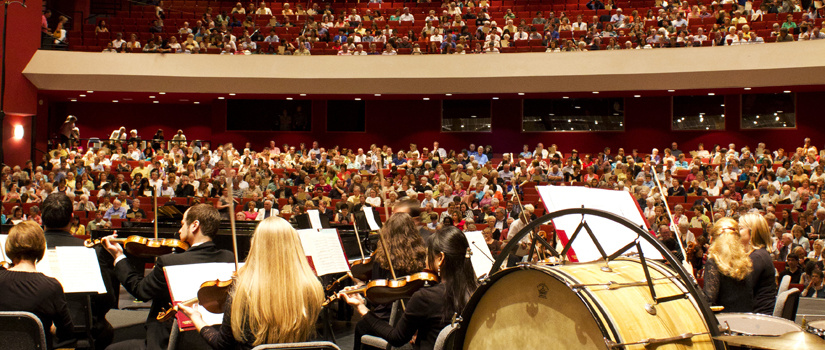
Symphony Orchestra
-
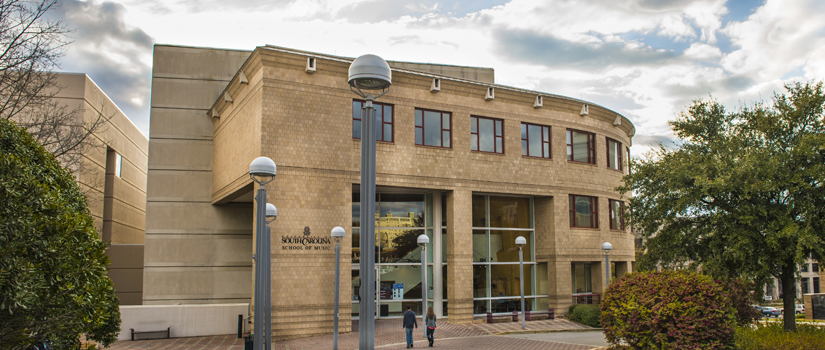
School of Music Building
-
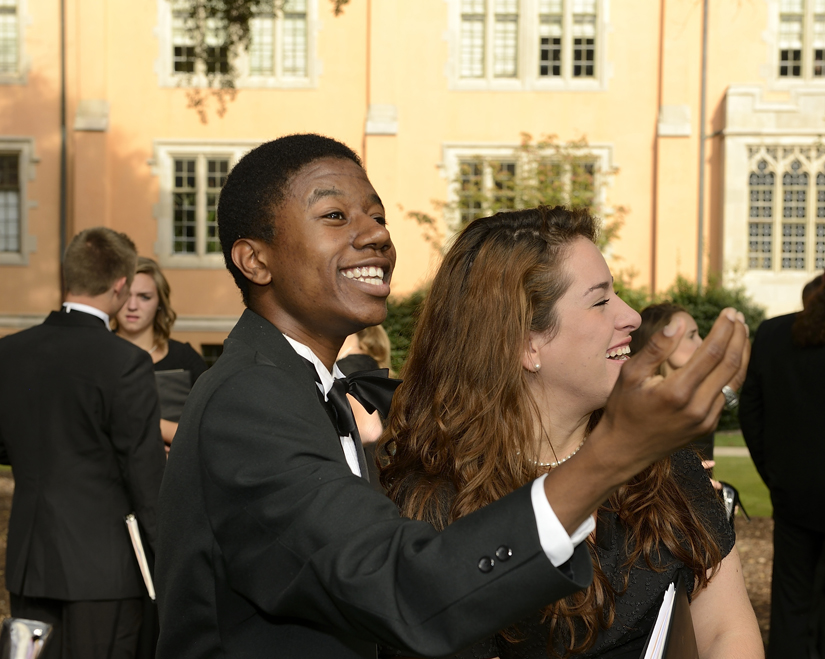
Choirs at Carolina
